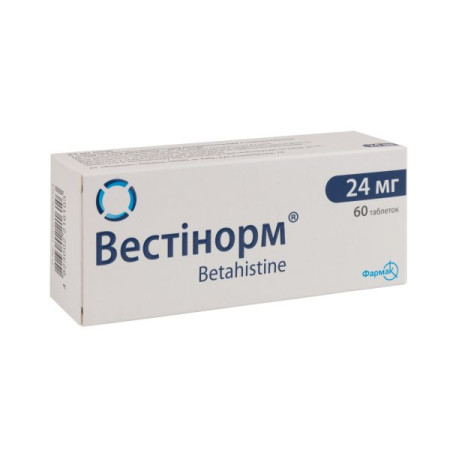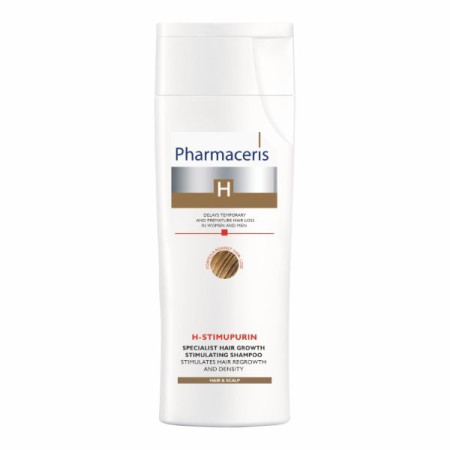Vidanol film-coated tablets 500 mg blister No. 60

Instructions Vidanol film-coated tablets 500 mg blister No. 60
Composition
active ingredient: tranexamic acid;
1 tablet contains tranexamic acid 500 mg;
excipients: microcrystalline cellulose, low-substituted hydroxypropylcellulose, povidone K30, croscarmellose sodium, colloidal anhydrous silica, talc, magnesium stearate, Colorcoat FC4S white coating: hydroxypropylmethylcellulose, diethyl phthalate, hydrogenated castor oil powder, stearic acid, talc, titanium dioxide (E 171).
Dosage form
Film-coated tablets.
Main physicochemical properties: round biconvex tablets, coated with a white shell, smooth on both sides.
Pharmacotherapeutic group
Antihemorrhagic agents. Fibrinolysis inhibitors. ATX code B02A A02.
Pharmacological properties
Pharmacodynamics
Tranexamic acid is an antifibrinolytic agent that is a potent competitive inhibitor of the conversion of plasminogen to plasmin. At high concentrations, it is a non-competitive inhibitor of plasmin. It has been reported that the inhibitory effect of tranexamic acid on plasminogen activation by urokinase is 6–100 times greater, and by streptokinase it is 6–40 times greater than the inhibitory effect of aminocaproic acid. The antifibrinolytic effect of tranexamic acid is approximately 10 times greater than the antifibrinolytic effect of aminocaproic acid. Tranexamic acid also has antiallergic and anti-inflammatory effects by inhibiting the formation of kinins and other active peptides involved in allergic and inflammatory reactions.
Pharmacokinetics
Absorption: After intravenous administration of tranexamic acid at a dose of 500 mg, the maximum plasma concentration Cmax is reached immediately, then the concentration decreases within 6 hours. The half-life is about 3 hours.
Distribution: Parenterally administered tranexamic acid is distributed in two directions: delayed absorption into the cerebrospinal fluid and into cells. The volume of distribution is approximately 33% of body weight.
Tranexamic acid can penetrate the placental barrier, and in breast milk of lactating women, its concentration can reach about 1/100 Cmax.
Excretion: Tranexamic acid is excreted unchanged in the urine. 90% of the administered dose is excreted by the kidneys in the first 12 hours after administration (glomerular excretion without tubular reabsorption).
After oral administration, 1.13% and 39% of the administered dose were recovered after 3 and 24 hours, respectively.
In patients with renal insufficiency, plasma concentrations of tranexamic acid are increased.
Indication
Short-term therapy of bleeding or risk of bleeding with increased fibrinolysis or fibrinogenolysis.
Local fibrinolysis, which is observed in the following conditions:
- prostatectomy or bladder surgery;
- menorrhagia;
- nosebleeds;
- cervical conization;
- post-traumatic hyphema.
Hereditary angioedema.
Tooth extraction in hemophilia patients.
Contraindication
- Hypersensitivity to tranexamic acid or to other components of the drug.
- Severe renal failure (due to the risk of cumulation).
- Acute thromboembolic diseases.
- History of arterial or venous thrombosis.
- Fibrinolytic conditions due to depletion coagulopathy.
- History of seizures.
Interaction with other medicinal products and other types of interactions
To date, no clinically significant interactions with tranexamic acid have been observed.
Due to the lack of research on these interactions, concomitant treatment with anticoagulants should only be carried out under the close supervision of a physician experienced in this field.
The drug should not be used simultaneously with chlorpromazine for subarachnoid hemorrhage.
The drug may reduce the effectiveness of thrombolytic therapy (streptokinase, alteplase, anistreplase).
Application features
In the event of hematuria of renal origin (especially in hemophilia), the risk of mechanical anuria increases due to the formation of a blood clot in the urinary tract.
During long-term therapy, patients with hereditary angioedema should have regular visual checks (e.g. visual acuity, visual fields, intraocular pressure, fundus) and liver function (liver tests).
Patients with irregular menstrual bleeding should not use tranexamic acid until the cause of the bleeding is determined. If tranexamic acid does not reduce the intensity of menstrual bleeding, alternative treatment should be considered.
Tranexamic acid should be used with caution in patients taking oral contraceptives due to the increased risk of thrombosis.
Since tranexamic acid levels may be increased in patients with renal insufficiency, a dose reduction is recommended (see section 4.2).
The use of tranexamic acid is not recommended in cases of increased fibrinolysis due to disseminated intravascular coagulation (DIC).
If visual disturbances occur, treatment should be discontinued.
There is no clinical experience with the use of tranexamic acid for the treatment of menorrhagia in children under 15 years of age.
Use during pregnancy or breastfeeding
Pregnancy
Tranexamic acid crosses the placenta. Although preclinical studies have not revealed a teratogenic effect of tranexamic acid on fetal development, it is recommended to follow general recommendations for the use of drugs during pregnancy, in particular, to prescribe the drug only when the expected benefit to the mother outweighs the potential risk to the fetus.
Breast-feeding.
Tranexamic acid passes into breast milk at a concentration approximately 1/100 of its concentration in the mother's blood. An antifibrinolytic effect in the infant is unlikely.
Ability to influence reaction speed when driving vehicles or other mechanisms
No data.
Method of administration and doses
Adults are prescribed the drug orally. It is used regardless of food intake.
Local fibrinolysis: 15–25 mg/kg body weight (2–3 tablets of 500 mg) 2–3 times a day. The following dosages may be used for the indications listed below: | |||
| - | Prostatectomy: For the prevention and treatment of hemorrhage in patients at increased risk before or after surgery, tranexamic acid is used as an injection. Then - as tablets of 1 g (2 tablets of 500 mg) 3–4 times a day until the disappearance of macroscopic hematuria. | ||
| - | Menorrhagia: 1 g (2 tablets of 500 mg) 3 times a day, no more than 4 days. In case of prolonged menstrual bleeding, the dose is increased, not exceeding the maximum dose of 4 g (8 tablets of 500 mg). It is not necessary to start treatment with the drug before the onset of menstrual bleeding. | ||
| - | Nosebleeds: for periodic bleeding – 1 g (2 tablets of 500 mg) 3 times a day for 7 days. | ||
| - | Cervical conization: 1.5 g (3 tablets of 500 mg) 3 times a day. | ||
| - | Post-traumatic hyphema: 1–1.5 g (2–3 500 mg tablets) 3 times a day. The dose is 25 mg/kg 3 times a day. | ||
| Hereditary angioedema: Some patients who are aware of the course of exacerbations of the disease, usually enough 1-1.5 g (2-3 tablets of 500 mg) 2-3 times a day for several days. Other patients should take the drug in the same dose for a long time, depending on the course of the disease | |||
| Tooth extraction in patients with hemophilia: 25 mg/kg (2–3 500 mg tablets) every 8 hours. | |||
Patients with renal failure.
Dose adjustment is necessary for patients with mild to moderate renal impairment according to plasma creatinine levels.
| Serum creatinine | Oral dose |
| 120–249 μmol/L | 15 mg/kg 2 times a day |
| 250–500 μmol/L | 15 mg/kg every 24 hours |
Elderly patients
In the absence of renal excretory function disorders, dose adjustment is not required.
Children
The drug is intended for use in adult patients.
There is no clinical experience with the use of tranexamic acid in children and adolescents under 15 years of age.
The dose for this patient group should be calculated based on body weight of 25 mg/kg per dose. However, data on dosage, efficacy and safety in these indications are limited.
Overdose
Symptoms: nausea, vomiting, abdominal pain, orthostatic symptoms and/or hypotension.
There is a risk of thrombosis in susceptible individuals.
Treatment: induce vomiting, gastric lavage, use activated charcoal. It is necessary to consume a large amount of fluid to promote renal excretion. Symptomatic treatment is used and, if necessary, anticoagulant therapy.
Adverse reactions
Immune system disorders: hypersensitivity reactions, including anaphylaxis.
On the part of the organs of vision: impaired color perception, retinal vein/artery occlusion.
Vascular: thromboembolic complications, arterial or venous thrombosis of any location.
On the part of the digestive system: nausea, vomiting, diarrhea, which disappear when the dose is reduced.
Skin and subcutaneous tissue disorders: allergic skin reactions.
Expiration date
3 years.
Storage conditions
Store at a temperature not exceeding 25 ºС.
Keep out of reach of children.
Packaging
10 tablets in a blister; 3 or 6 blisters in a cardboard box.
Vacation category
According to the recipe.
Producer
KUSUM HEALTHCARE PVT LTD/KUSUM HEALTHCARE PVT LTD.
SP-289 (A), RIICO Industrial area, Chopanki, Bhiwadi, Dist. Alwar (Rajasthan), India/SP-289 (A), RIICO Industrial area, Chopanki, Bhiwadi, Dist. Alwar (Rajasthan), India.
There are no reviews for this product.
There are no reviews for this product, be the first to leave your review.
No questions about this product, be the first and ask your question.













